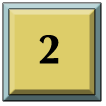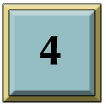An effective educator knows their students and recognizes their differences, but does not use these as a hindrance to learning. In the resource manual, Teaching in a Diverse Classroom (2012), to facilitate the learning process of a diverse classroom it suggests using a variety of learning styles. The way a student learns describes his or her learning style. Students can auditory learners, which means they receive ideas and information by hearing them. They may struggle with reading and writing, but excel at memorizing spoken words. These students thrive in a discussion-based classroom where they are given the opportunity to give oral presentations.
On the other hand, there are students who are visual learners and they prefer to receive information by seeing it. They pay careful attention to details and they are not talkative. These students appreciate outlines, graphs, maps and pictures when they are learning. What about those “hyperactive” students who cannot sit still and prefer to move and touch things? These students are kinesthetic-tactile learners and they like movement and take many notes when they are learning. These students must move a body part while they are learning. Knowing that students learn differently, it is critical that instructional leaders monitor their teachers’ ability to teach a lesson that reflects a consideration to the diversity of the students in the classroom.
When monitoring the classroom for the effectiveness of teaching a diverse population, what should school leaders look for? Tomlinson states that teachers in a differentiated classroom engage students in instruction through different learning modalities, by appealing to differing interests, and by using varied rates of instruction along with varied degrees of complexity. They challenge the struggling, advanced, and in-between students to work harder and make learning gains.
There are specific indicators of a differentiated classroom. The most significant one is that teachers modify content, processes, and products based on assessment data. Content is what students learn. Processes are the activities that are used to help students learn the content. Products are the evidence of what they students learn. A teacher in a differentiated classroom knows their students’ readiness level. Readiness is a student’s entry point to a particular skill. Teachers differentiate the instruction in consideration of the various readiness levels in the classroom; therefore, school leaders may observe students in groups based on their skill level. Or, leaders may observe students working at a different pace than the rest of the class.
An effective leader may observe classrooms to determine whether teachers are considering the interest of their students and using these interests to motivate them to improve their learning. Interest refers to a child’s affinity, curiosity, or passion for a particular topic or skill. An example that is shared in the book, The Differentiated Classroom, is a student who is eager to learn fractions because she is very interested in music, and her math teacher shows her how fractions relate to music. A teacher in a differentiated classroom considers the learning profile of the students in his or her classroom. Learning profile has to do with how we learn. It may be influenced by intelligence preferences, gender, culture, or learning style.
How can you effectively provide teachers with the resources that teach them strategies to close the achievement gap among their students?
Although student achievement has increased in the past decade, there are still significant differences between rich and poor and white and minority students (CARE, 2007). The best way to close the achievement gap is to focus on learning for all and the strategies that have been proven to be successful in narrowing the gap. One strategy that is deemed successful for teachers of low income or culturally or linguistically diverse students is to connect school to their students’ everyday lives. They integrate classroom learning with out of school experiences and knowledge of life inside the community (learning through observation-modeling).
Another strategy involves of building on students’ interests, experiences, and knowledge to motivate and engage them in their learning. Subsequently, these effective educators recognize the differences between intrinsic and extrinsic motivation, allow the expression of student interests and use those interests to guide instruction, and provide constructive and regular feedback, using errors as opportunities for learning.
To close the achievement gap, teachers must challenge students through cognitive complexity. Academic rigor should be consistent despite the differences of the students. Therefore, effective school leaders monitor the rigor in the classroom to determine whether students are being challenged.




